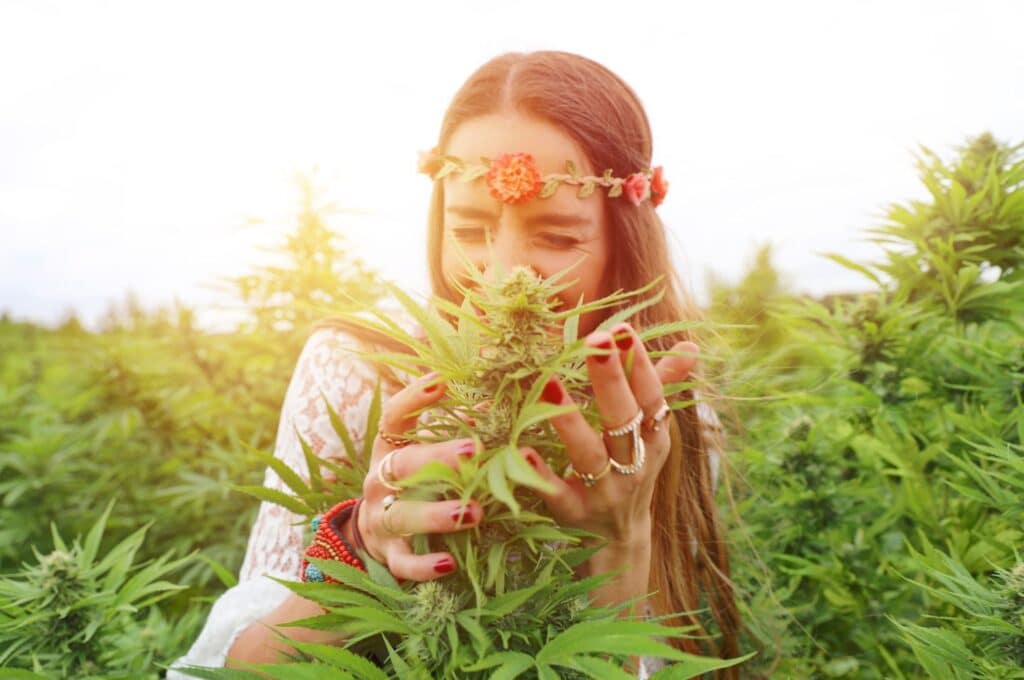

Want to know an industry secret? One of the biggest misconceptions about weed is that higher THC content means higher quality bud that leads to a better, stronger high. The truth is, THC percentage has nothing to do with the quality of your weed, and is also a poor indicator of potency.
But do THC percentages actually matter? The truth is, not really. THC percentage has nothing to do with the quality of your weed, and it is also a poor indicator of potency. So what does high THC mean to you, besides higher prices? Keep reading to find out!
Let’s look at the reasoning behind this widespread misconception. We all know that THC is the specific compound in cannabis that gets you high. It’s easy to assume that this logically would mean more THC equals more psychoactive effects.
So does high THC weed get you higher? Not necessarily. That is the case with alcohol, where a higher percentage of alcohol by volume leads to a higher level of inebriation. But with cannabis, there are quite a few additional factors at play.

Does Higher THC Mean Stronger Weed?
First of all, it’s important to note that there is no regulation of the labs that test for THC potency. Research shows results can actually vary widely depending on which lab does the testing. It’s a relatively new industry, which leaves room for error and deception and can make it difficult to pinpoint the precise percentage of THC in any particular flower.
Secondly, a recent study by the University of Colorado found that THC potency does not actually track with intoxication levels. While there can be striking differences in THC levels in the blood of people who consume concentrate versus flower for example, the level of actual impairment is extremely similar.
Researchers hypothesize that once cannabinoids fill up the receptors in the brain that create intoxication, additional cannabinoids have less of an impact because the receptors are already full. There is also no research that indicates that a higher dose of THC is more beneficial for any medical condition, meaning this research impacts both medicinal and recreational cannabis users.
While this may go against the majority of public perception of THC, it’s an open secret within the industry. This is especially evident in cannabis competitions. In the prestigious Emerald Cup, the highest THC flower rarely wins. But the industry itself often perpetuates this myth, as the misconception of higher THC equaling higher highs is pervasive enough to affect pricing throughout the supply chain. You’ll find strains with THC over 20% priced higher than those with lower percentages just about everywhere, but this is based on supply and demand, not science.

THC Levels Explained
So if higher THC doesn’t guarantee a better high, why not? What does?
As weed connoisseurs will tell you, the quality of cannabis is actually dependent on the entourage effect. This is the idea that weed is greater than the sum of its parts and that all of its components work together to create a unique and full experience. So while THC may be the best-known cannabis component, it actually holds no more importance than any of the others. In fact, THC actually gains effectiveness when used in conjunction with other cannabinoids and terpenes.
There are over 100 cannabinoids in cannabis, far beyond the well known THC and CBD. Each one has the potential to impact your high. Terpenes, the aromatic compounds found in cannabis that affect flavor, scent, and overall vibe, are also crucial to determining the quality of flower and the way the body responds to it.
So what does the THC percentage mean? It is simply a measure of the quantity of THC in relation to other cannabinoids and cannabis components in the strain sample. While this number is interesting, it should not be given too much weight. To focus solely on THC content not only does not guarantee a better high, but it robs the consumer of the full, well-rounded experience that different types of cannabis can offer.

How to Choose Well-Rounded Weed
So how do you determine what cannabis is best for you? There are several factors to look at.
- Check the THC percentage, but remember that higher doesn’t mean better. Most great weed ranges between 15-25% THC. The biological maximum is 35%, so anything over 30% is unnecessarily high, and possibly fraudulently inflated.
- Does it contain a substantial amount of other cannabinoids? If CBD, CBG, or any other cannabinoids are listed on the strain profile, that’s a good thing. Cannabinoids work together to provide maximum benefits.
- Read through the terpene profile. The dominant terpenes can give you a clue about how this strain will affect you. For example, limonene tends to have uplifting effects while myrcene can be deeply relaxing.
So when buying weed, trust your senses. Look for brighter hues, fewer seeds and stems, and sugary, sticky, terpene-rich trichomes. If you have the opportunity to smell before buying, look for a pungent and complex aroma that matches your preferred flavor profile. The aroma you are attracted to may actually be a clue as to what terpenes your body is craving.
Plus, make sure to look at any available reviews or descriptions of the strain you’re interested in for insight into its flavor, intensity, and effects. Finally, you can always ask your local Timber budtender for a custom recommendation based on your individual taste, needs, and preferences. Shop Timber’s menu of premium flower now!


